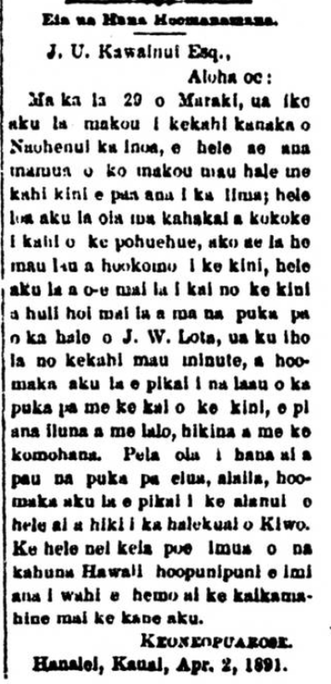Kaʻu Wahi Pūʻolo
"Kaʻu wahi pūʻolo"(my little bundle) derives from the use of pūʻolo (bundle, container) as metaphor for "message or topic."
This is a blog about Hawaiian Religion. A frequent topic is its continuity despite the fact that it was officially abolished in 1819 and despite massive efforts to Christianize Hawaiians in the 19th and 20th centuries. A good portion of this blog is dedicated to sharing articles on Hawaiian religion from 19th- and 20th-century Hawaiian-language newspapers and other sources. I use the electronic archives Papakilo Database and Ulukau for much of my online research. My translations here are just very rough drafts to offer the gist of the articles for those who are unable to access the Hawaiian language.
This is a blog about Hawaiian Religion. A frequent topic is its continuity despite the fact that it was officially abolished in 1819 and despite massive efforts to Christianize Hawaiians in the 19th and 20th centuries. A good portion of this blog is dedicated to sharing articles on Hawaiian religion from 19th- and 20th-century Hawaiian-language newspapers and other sources. I use the electronic archives Papakilo Database and Ulukau for much of my online research. My translations here are just very rough drafts to offer the gist of the articles for those who are unable to access the Hawaiian language.
Photo: Dawn at Kahoʻolawe, a sacred island and kino lau of the ocean deity Kanaloa. Across the ocean stands Haleakalā, another sacred mountain, on the island of Maui.

 RSS Feed
RSS Feed